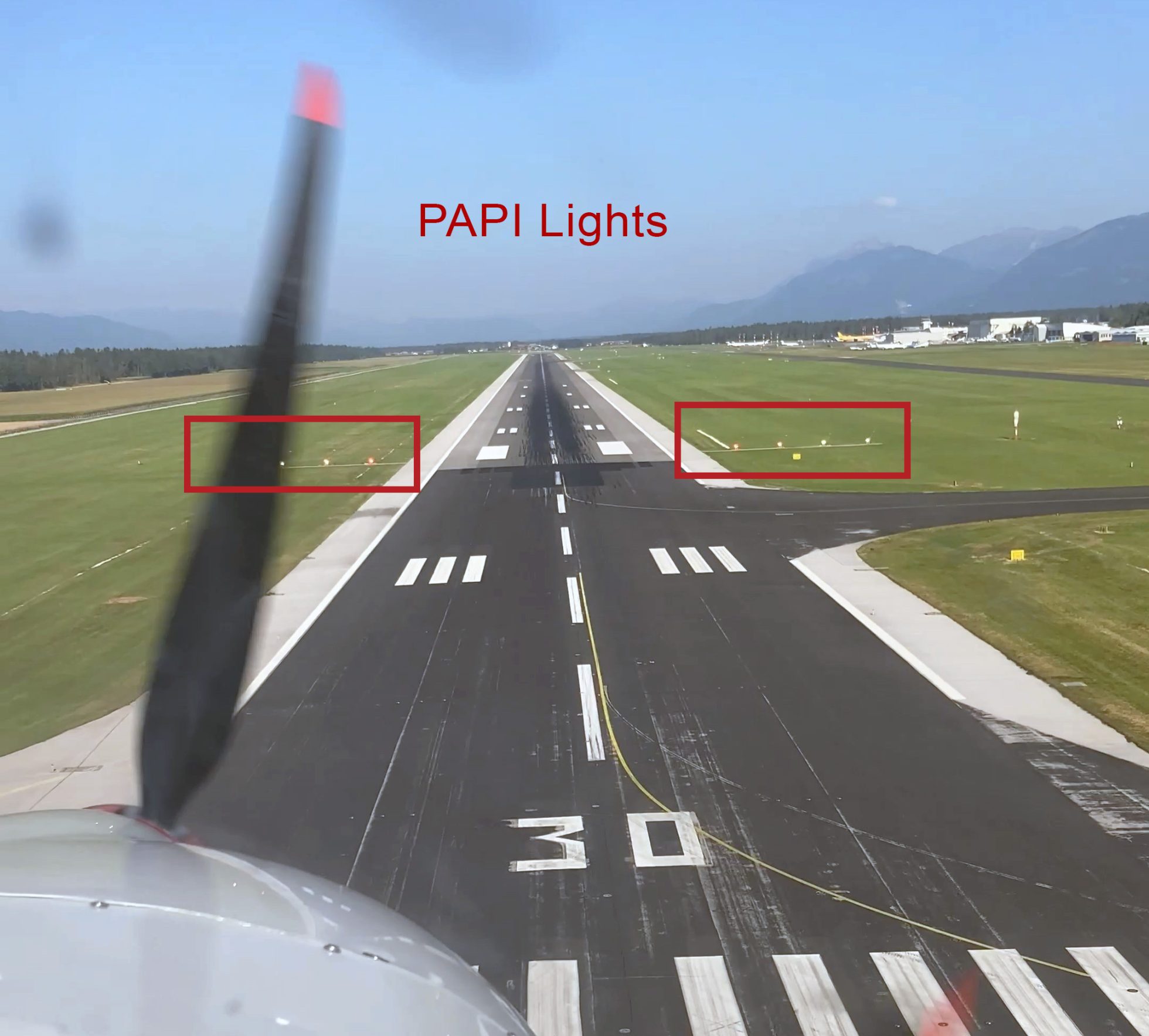Navigating the skies requires more than just skills. It’s about understanding every tool and aid available. Especially PAPI lights. These lights play a vital role during the landing phase, guiding pilots to a safe touch down.
Let’s delve into seven pivotal facts about PAPI lights.
Interpreting PAPI Lights on Approach
Two red and two white lights signify you’re on the ideal glide path. If you spot four white lights, you’re too high. Conversely, four red lights mean you’re too low.
Thus, adjusting your approach is essential for a smooth landing.
Installation and Calibration of PAPI Lights
PAPI lights are strategically placed beside runways. They undergo meticulous calibration to ensure accuracy. Typically, professionals use flight inspection aircraft to calibrate these lights.
Precision is key, given the crucial role they play in safe landings.
Maintaining and Checking PAPI Lights
Maintenance is essential. Regular checks guarantee their reliability. Generally, airport authorities undertake periodic inspections. This ensures lights are visible, bright, and free from obstructions.
Hence, always trust these guides when making your approach.
Training on PAPI Light Interpretation
Training new pilots on PAPI light interpretation is crucial. Comprehensive simulator sessions combined with real-world exercises are ideal.
These equip novice pilots with the confidence and knowledge to interpret PAPI lights effectively.
Utilizing PAPI Lights for Perfect Approaches
Mastering PAPI lights can drastically improve your landings. Remember, these lights aren’t just guides. They’re precise indicators of your position. Following them diligently ensures a safer, smoother landing approach.
Nighttime Landings and PAPI Lights
Night amplifies the importance of PAPI lights. Their bright illumination pierces through darkness, offering clarity. Furthermore, during adverse weather or low visibility, PAPI lights become even more crucial.
They provide a beacon, guiding pilots safely onto the tarmac.
Adjusting Flight Path Using PAPI Lights
Spot a change in PAPI light color? Act swiftly. A shift from two white-two red to three white-one red means you’re slightly high. Adjust your descent rate accordingly. Conversely, if more lights turn red, increase your altitude slightly.
PAPI lights are more than just luminous runway sidekicks. They’re instrumental in ensuring safe landings. As pilots or pilot students, understanding PAPI lights is non-negotiable.
Imbibe these facts, and you’re one step closer to mastering every landing.



